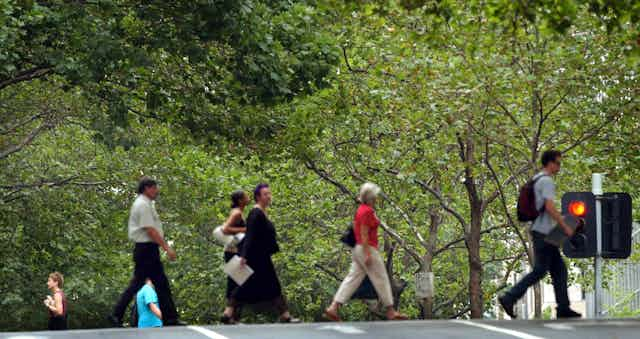In the 1953 short story The Man Who Planted Trees, a lone shepherd plants thousands of trees, transforming a desolate valley into a vibrant forest with pleasant villages and unspoiled wilderness. The moral of this story is a simple one: that perseverance and planting trees can make places more desirable to live.
Across the United States, the US Forest Service is proving this, neighbourhood by neighbourhood.
Within some neighbourhoods, scientists are documenting a connection between trees and a specific social improvement: a reduction in crime. These studies combine modern mapping technology with spatial and economic statistics to compare crime levels between similar urban neighbourhoods in the same city.
This research is becoming increasingly widespread and sophisticated. According to Kathleen Wolf, a research social scientist with the University of Washington and the US Forest Service, this is “part of a movement to understand the role of nature in public health”. Wolf observes:
Now that we’re in the era of Big Data, we’re seeing an acceleration of crime-related research in a wide variety of disciplines and fields. We’re also incorporating data on things like disparities of green in urban communities.
Not only do healthy, well-maintained trees provide shade and benefit the ecosystem, they can have a social meaning: that people in that neighbourhood look out for each other.
Progress in Baltimore
One of the places we are conducting this type of research is Baltimore. One of the oldest cities in US, Baltimore has more than 600,000 residents. It is known for its rich historical heritage, a picturesque inner harbour, crab cakes … and for having some of the worst crime and poverty levels in the nation.
According to recent estimates, 25% of Baltimore residents and 37% of Baltimore children live in poverty.
Faced with one of the highest homicide rates in the country, the city implemented a youth curfew law in 2014 to keep unaccompanied children off the streets at night.
Baltimore also has an extensive team of urban research scientists, affiliated with both the US Forest Service Baltimore Field Station and the Baltimore Ecosystem Study, and a proactive non-profit organisation, The Parks & People Foundation. These entities are working together to demonstrate a connection between adding trees and reducing crime in under-served neighbourhoods.
We worked in a research collaboration to look at the relationship between urban tree cover and rates of robbery, burglary, theft and shooting in under-served neighbourhoods in Baltimore. After controlling for income, population density, block-scale tree canopy and housing type, we found that a 10% increase in tree canopy corresponded to a roughly 12% decrease in crime.
According to Valerie Rupp, director of community greening for The Parks & People Foundation in Baltimore, people are taking back their neighbourhoods. “While crime still exists, there’s been a shift to more minor, less violent crimes,” she says.
Pride and goodwill in Philadelphia
Less than 150 kilometres northwest of Baltimore is the city of Philadelphia, another historic metropolis. With a population of more than 1.5 million, Philadelphia also has its share of big-city problems.
Although Philadelphia’s homicide rate is lower than Baltimore’s, the city has one of the highest homicide rates of the country’s ten most populous cities.
The US Forest Service Philadelphia Field Station is working with city groups such as the Parks and Recreation Department and the Philadelphia Water Department to establish the “triple bottom line”, meaning improvements in three broad areas of impact – environmental, social and economic.
In terms of crime reduction, our studies have found that “green” stormwater infrastructure improvements resulted in significant reductions in narcotics possession and theft. According to Philadelphia police detective Hugh Davis, one can feel neighbourhoods changing and becoming safer over time. Davis says:
It often starts out as a grant program to make landscape improvements, and then residents start to take ownership. It improves neighbourhood pride and goodwill toward the city.
Developing ‘green courage’ in the inner city
The theory behind urban greening and reduced crime levels is that when under-served neighbourhoods are made more pleasant, it can result in a healthier sense of community. In turn, it makes those neighbourhoods less hospitable to criminal activity.
In places like Baltimore and Philadelphia, city departments are working with communities to give people what some urban sociologists call “green courage”. This occurs when residents become more willing to work together after seeing improvements in their neighbourhood.
At the end of the day, urban greening is not simply about planting trees. It’s about people working together to make neighbourhoods better places to live.
We are working alongside these efforts, helping to document and provide a scientific basis for the work to spread and continue. For those of us who are working toward these goals, we sometimes wonder: are we planting trees to organise people or are we organising people to plant trees?
The best answer is probably “yes” to both.
The authors wish to acknowledge the contribution of Brian Cooke, an editor and writer for the US Forest Service Northern Research Station, to the writing of this article.

